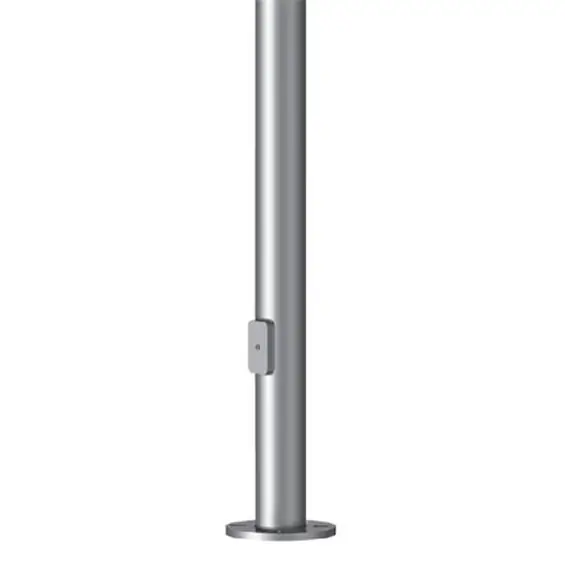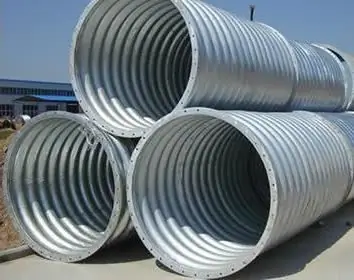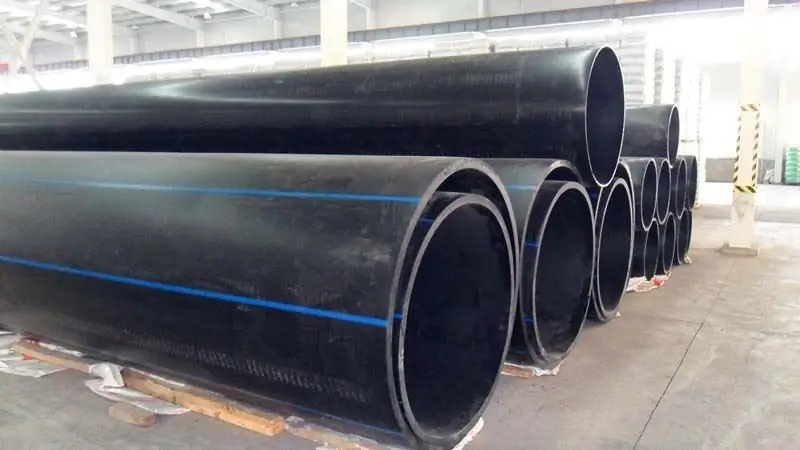2025 Author: Howard Calhoun | [email protected]. Last modified: 2025-01-24 13:10:35
Industrial pipe is a tubular section or hollow cylinder, but not necessarily round. It is used more often for transporting substances, liquids, gases, suspensions, powders and small solids. Various types of pipes are used in industry, they differ not only in diameter and material, but also in the method of installation. Their classification is extensive, but to understand it, you should study the types of pipes used in various industries.

Electro-welded industrial pipes
Made from low alloy carbon steel. The pipes are suitable for pipeline systems and construction, they are used for gas pipelines, but with low pressure, in heating networks and water supply systems. Electric-welded pipes are distinguished by material, wall thickness, diameter and accuracy in manufacturing. Such pipes are presentedstandard requirements, they must meet the required strength, be reliable and resistant to aggressive environmental factors. To ensure these conditions, a special layer of polyethylene is applied to steel pipes, but it is better if the pipe is completely made of stainless steel. The shape of this type of pipe is different, most often it is a circle, square or rectangle. Pipes are connected using welds, which can be made in various ways: from plasma welding to electron beam welding in some types of industry.
Seamless
Seamless industrial pipes are more popular than electric welded pipes. They are used in the construction of water supply and sewerage systems in private residential buildings, in industrial communications, shipbuilding and mechanical engineering. A big plus of these pipes is that the leakage of liquids or gases passing through them is completely excluded by the geometry of the pipe. The absence of seams increases not only tightness, but also increases reliability and service life. There are several ways to manufacture seamless pipe: from drawing to rolling. The material used as raw material affects the capabilities of the product. The use of various additives in the alloy to steel gives either elasticity to the pipe, or increases wear resistance and resistance to environmental factors, while the quality of the structure does not suffer from this.

Chimneys. History
The beginning of industrial smoke and ventilation pipes is taken in ancient times, when people laid outstones around the fire. The smoke from the fire still went in different directions, and pipes were needed to divert it. Furnaces in Russia have the same design as the simplest rooms of ancient people. Soot accumulates inside the pipe, so you should always monitor its tightness and prevent leaks. In addition, chimneys are needed to generate draft during the operation of the boiler room. Previously, they were made of brick, but modern versions are less massive and made of metal with thermal insulation.
Chimney options
Smoke and ventilation industrial pipes are divided into the following categories:
- metal column;
- self-supporting metal;
- façade;
- stretch marks;
- truss.

Industrial chimney pipes are designed individually, even though everyone has the same function, but the location in a particular production imposes certain features. The design of the chimney pipe is carried out only by professionals, observing the following factors:
- gases must pass over the entire height of the structure, and be removed to the atmosphere along a smooth surface;
- features of the equipment dictate the calculation and diameter of industrial pipes to create "self-pull" in them;
- concentration and dispersion of emissions must be within acceptable limits.
Chimney pipes are subject to special requirements not only during production, but also during installation.
Key parameters of chimneys
Throughout the height of the pipe has differentparameters - this is due to the features of the gas outlet channels. Their diameter can reach 1.5 meters, ranging from 0.2 meters. Based on the main characteristics of the pipe, it can be supplemented with equipment in the form of a ladder, a light fence or a lightning rod. Large-diameter pipes are difficult to manufacture and require serious reinforcement of the base and the entire trunk.

The rules for building chimneys include the following parameters:
- Installation of industrial pipes should be optimal for the installation site of boilers or other equipment for the removal of gas waste from the units.
- You can install one pipe, but connect several devices to it at once, while observing safety rules. This is inconvenient only because in order to prevent one equipment, you will have to turn off all the others.
- Correctly determine the height of the pipe and the thickness of its walls. Plan a technological hole.
- Secure the base in one of the possible ways.
Classification of industrial pipes
There are several features that distinguish industrial pipes:
- the main factor is height, there are high pipes up to 180 meters, medium ones from 60 to 180 meters, low pipes less than 60 meters, starting from 20;
- pipe cross section can be round, rectangular and square;
- different in materials: brick, metal, reinforced concrete, or maybe a combination of materials, for example, the barrel is made of metal, and the casing is made ofconcrete;
- technical purpose can be not only for smoke removal, but also for ventilation and aggressive environments;
- construction methods are also different: pipes can be monolithic or prefabricated with different types of formwork;
- large, medium or small diameter pipes.

Technical elements
The main parts that industrial pipes have: the base - the foundation, the trunk and additional arrangements. The base can be made of a reinforced concrete slab, smooth or ribbed for unstable soils. Lay it to a depth depending on climatic conditions, operation and groundwater.
The pipe shaft is divided into three parts: body, head and lining. The body, in turn, is divided into consoles, each of which is from 10 to 20 m, inside it has a coating of refractory bricks or acid-resistant. The head is protected by a special cap made of cast iron from erosion.
Recommended:
Steel support: types, types, characteristics, purpose, installation rules, operation features and applications

Steel poles today are most often used as lighting poles. With their help, they equip the lighting of roads, streets, courtyards of residential buildings, etc. In addition, such structures are often used as supports for power lines
Types and diameters of metal pipes. Metal pipes of large diameters

Steel pipe is a cylindrical tube and is the most used product in the steel industry. The main use of steel pipes is to transport oil, gas and water over long distances. In household appliances, such as refrigerators, ordinary steel pipes are used, as well as in heating and water supply systems
Diameters of polyethylene pipes: external, internal, purpose of pipes

What diameters polyethylene pipes have, you now know. However, for the installation of these products, it is necessary to familiarize yourself with the features of docking. Connections may or may not be detachable. The former provide for the possibility of disassembling the system during operation. To create such a connection, steel flanges are used. During operation, disassembly cannot be carried out if the connection is one-piece
Corrugated PVC pipes: description and purpose

Corrugated PVC pipes are used to provide additional protection for both external and internal wiring of electrical, telephone, television and other networks. The smooth inner layer of the pipe, made of light or heavy series HDPE or PVD materials, provides easy cable routing, allowing you to replace damaged wire without much difficulty
Industrial lamp: types, characteristics, purpose

The article is devoted to industrial lamps. The characteristics, varieties, nuances of installation and the purpose of this lighting equipment are considered

